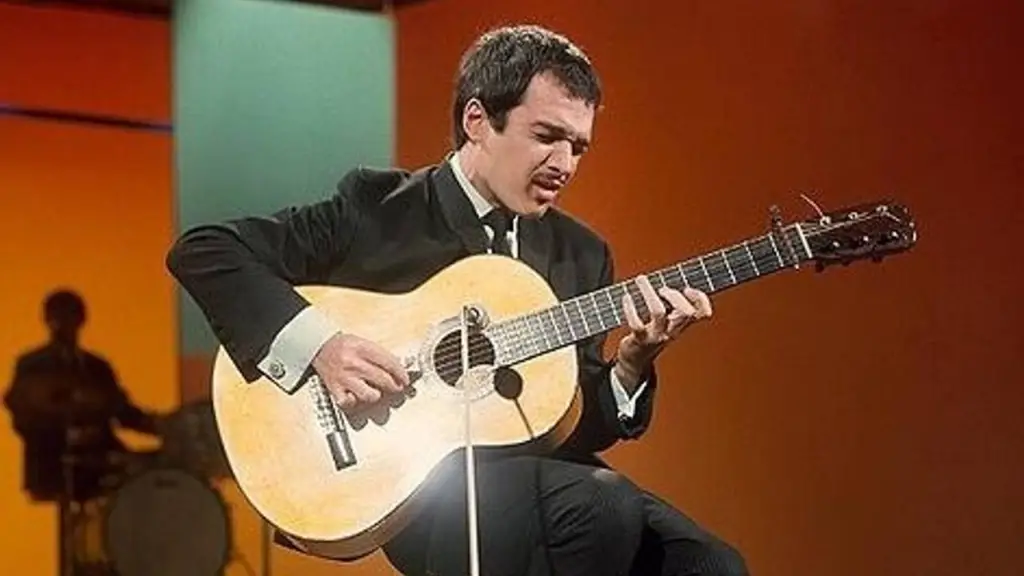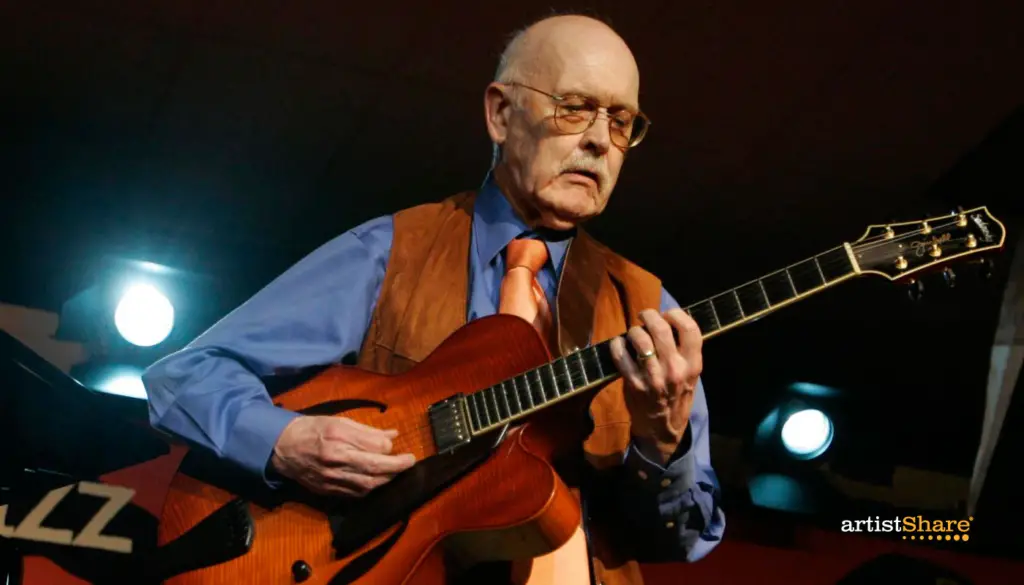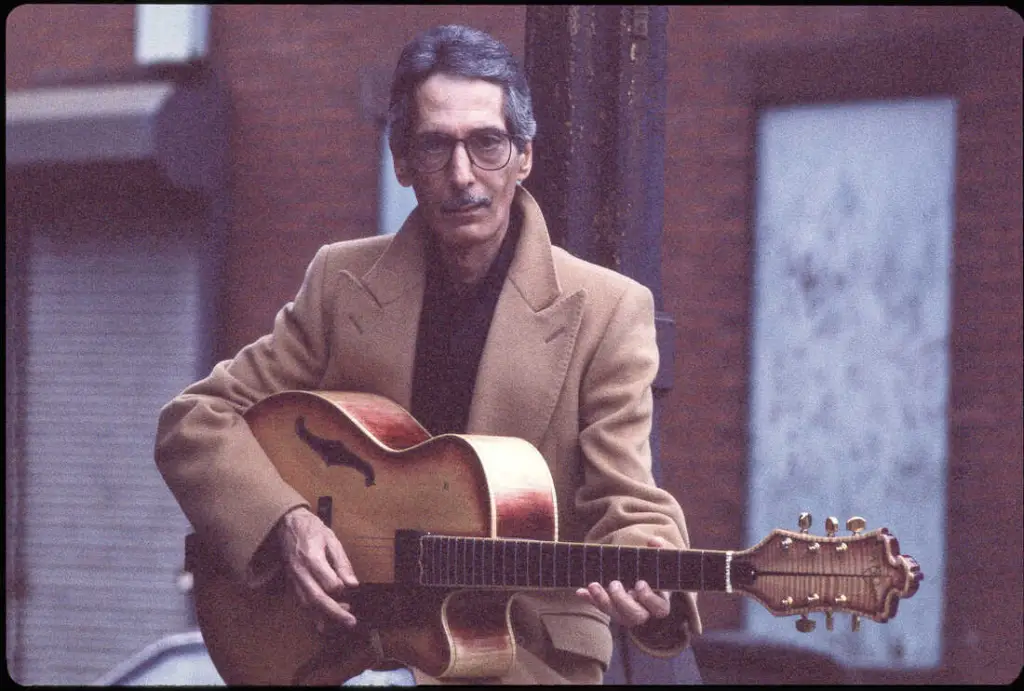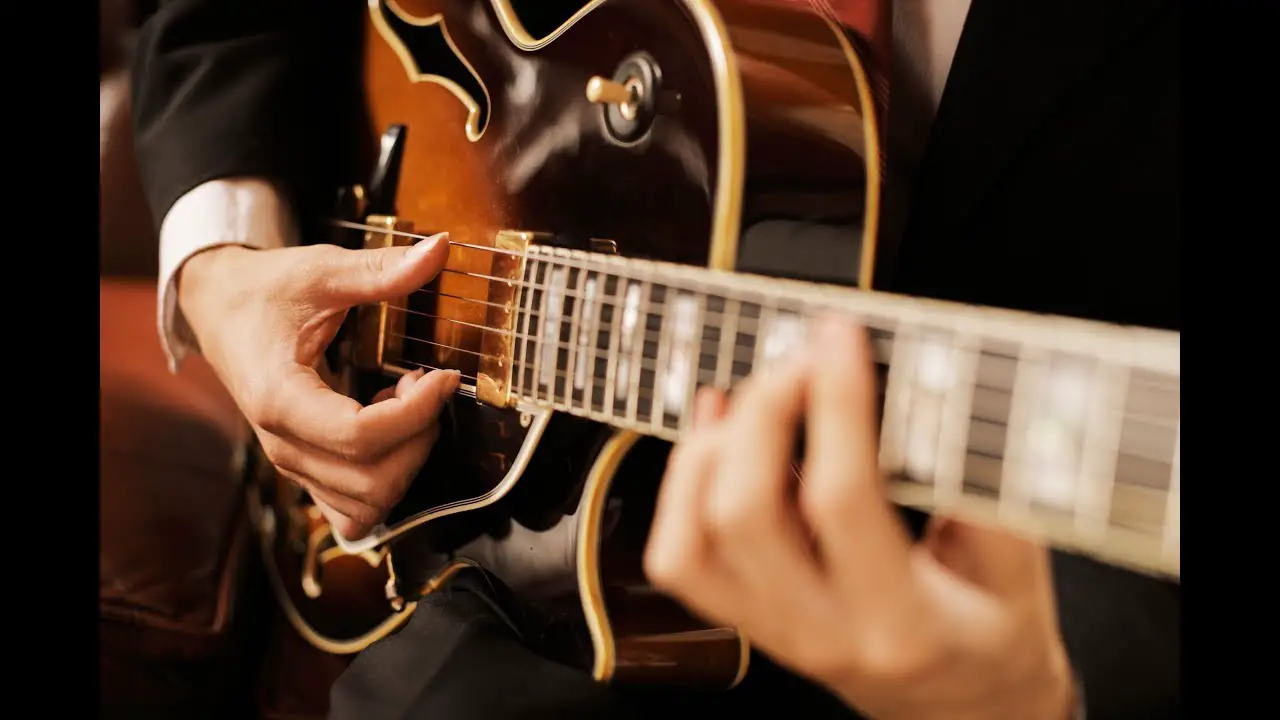The Best Jazz Guitarists Of All Time Ranked
Jazz guitarists are guitarists who play jazz using an approach to chords, melodies, and improvised solo lines which is called jazz guitar playing. The guitar has fulfilled the roles of accompanist (rhythm guitar) and soloist in small and large ensembles and also as an unaccompanied solo instrument. Until the 1930s, jazz bands used banjo because the banjo’s metallic twang was easier to hear than the acoustic guitar when competing with trumpets, trombones, and drums. The banjo could be heard more easily, too, on wax cylinders in the early days of audio recording. The invention of the archtop increased the guitar’s volume, and in the hands of Eddie Lang guitar became a solo instrument for the first time. Following the lead of Lang, musicians dropped their banjos for guitars, and by the 1930s the banjo hardly existed as a jazz instrument. Amplification created possibilities for the guitar. Charlie Christian was the first to explore these possibilities. Although his career was brief, it was influential enough for critics to divide the history of jazz guitar into pre- and post-Christian eras. Here are all of the best Jazz Guitarists of all time ranked.
See more: The Best Drummers Of All Time Ranked
See more: The Best Bassists Of All Time Ranked
20. Kenny Burrell

“Detroit-born and raised Kenny Burrell fused jazz and blues stylings to create one of the smoothest most soulful jazz guitar sounds ever recorded. Burrell began playing guitar when he was 12. He cites influences as diverse as Charlie Christian and Django Reinhardt among jazz guitarists and Muddy Waters and T-Bone Walker among blues legends.”
19. Lenny Breau

“From Auburn, Maine, and born into a family of country musicians, Breau was a member of his family’s band for several years when he was a teenager, but left after angering his father by playing a jazz-inflected solo. After that, the technically brilliant Breau gravitated towards jazz and also assimilated Flamenco music, which resulted in a distinctive personal style that never forgot its country roots.”
18. John Pizzarelli

“John Pizzarelli Jr. is the son of a jazz guitarist whose career surpassed that of his father, Bucky Pizzarelli. Raised in Paterson, New Jersey, Pizzarelli began learning guitar at age 6 and played trumpet as well during his youth. Pizzarelli has recorded more than 20 solo LPs and recorded on more than 40 others by artists as diverse as Paul McCartney and Rosemary Clooney.”
17. Emily Remler

“A tragic heart attack robbed the world of this Manhattan-born guitarist’s talent, who began playing at the age of 10. Though indebted to her inspirations, Wes Montgomery and Joe Pass, Remler has earned her place among the best jazz guitarists in history thanks to the development of her own style, which combined a languid grace and emotional intelligence with virtuosic fretboard work.”
16. Russell Malone

“Though in demand as a sideman (his credits include Jimmy Smith, Diana Krall, Roy Hargrove, Harry Connick Jr, and Sonny Rollins) this Georgia guitarist has a string of fine solo albums to his name. Malone takes a more traditional, straight-ahead, bop-tinged approach to jazz guitar, favoring a rich, mellow tone and combining Grant Green-esque horn-like melodies with subtle chord sequences.”
15. Jimmy Raney

“Tal Farlow’s replacement in the Red Norvo Trio, Kentucky-born Raney branched out as a bandleader in the mid-50s, triumphing in DownBeat magazine’s Best Guitarist polls on two occasions during that time. His eloquent style, with its lucid melodic lines and cool harmonies, won him many fans and his numerous credits include recording stints with Stan Getz, Oliver Nelson, Lalo Schifrin, and Eddie Harris.”
14. Freddie Green

“Hailing from South Carolina, Green was a long-serving stalwart of the Count Basie band and spent almost half a century with the jazz aristocrat. He began on the banjo before graduating to the six-string guitar, and rose to fame in the big band swing era. Rarely taking solos, Greene preferred to help drive the rhythm section by providing a flowing and hard-swinging chordal accompaniment. He wrote the book on big band guitar paying.”
13. Grant Green

“A prolific recording artist at Blue Note during the 60s and early 70s, St Louis-born Green, who was influenced by bebop horn players, adopted a linear approach to the guitar, favoring single melodic lines over chordal accompaniment. His minimalist, less-is-more aesthetic, with its blues-infused phrasing, was often highlighted within an organ trio setting. A good starting place? Idle Moments.”
12. Jim Hall

“Considered one of the great classic jazz guitarists, Hall played with a delicate, warm tone that worked so well he barely changed it throughout his long career! Some of his finer work occurred in duo settings, including with jazz bassist Ron Carter, fellow guitarist Pat Metheny and most famously, with legendary jazz pianist Bill Evans.”
11. Charlie Christian

“A true jazz guitar revolutionary, Texas-born Christian rose to fame in Benny Goodman’s band during the years 1939-41. He pioneered the electric guitar in jazz, which, combined with his penchant for using single-note lines (like a horn player), took the instrument out of the rhythm section and into the foreground, making it a valid solo instrument.”
10. John Scofield

“Alongside Pat Metheny, John Scofield is one of the truly legendary jazz guitarists still recording today. After a spell in Mile Davis’ band in the 1980s, ‘Sco’ as he is known to his fans has gone on to record some of the most instantly recognizable jazz guitar playing around.”
9. Pat Metheny

“This chameleonic fretboard sorcerer from Missouri – whose album credits range from David Bowie and Joni Mitchell to Ornette Coleman – cites the influence of Wes Montgomery and Jim Hall as key components in the foundation of his own unique style. Lyrical, harmonically rich, and yet also intent on dissolving musical boundaries, Metheny’s shape-shifting music is hard to classify, but that hasn’t stopped him nabbing 20 Grammy awards. “
8. George Benson

“Influenced by Charlie Christian and mentored by Wes Montgomery (he’s often considered the latter’s heir apparent – no finer compliment for any of the world’s best jazz guitarists), this Pittsburgh-born guitar slinger was a child prodigy who became a jazz and soul superstar in the 70s when he reinvented himself as a vocalist. A dexterous fretboardist out of the soul-jazz school, Benson’s calling card is doing a scat vocal while doubling the melody on the guitar. Probably the greatest jazz guitarist alive right now.”
7. Wes Montgomery

“Just using a calloused thumb to pick out notes, Montgomery was inspired by the bebop horn-like phrasing of his idol, Charlie Christian, but offered a more advanced harmonic style that incorporated block chords and the use of parallel octaves. He died too young, but his music and its influence lives on. Start with Incredible Jazz Guitar of Wes Montgomery and explore further from there.”
6. Pat Martino

“Pat Martino did something no one had ever done before…he became a world-class musician twice! After becoming a formidable jazz guitarist in the 1970s, Martino suffered a devastating brain aneurysm in 1980 and although he thankfully survived, he was left with amnesia and had to relearn the guitar from scratch.”
5. Joe Pass

“A New Jersey native with Sicilian ancestry, Pass (born Joe Passalaqua) started playing guitar at the age of nine and advanced so rapidly that he was gigging by the time he was 14. A supremely versatile guitarist, he patented a singular and innovative style with which he could articulate melodic lines using deft sequences of chord progressions. Pass spent many years accompanying singer Ella Fitzgerald and also played extensively with pianist Oscar Peterson.”
4. Django Reinhardt

“The founding father of swing-influenced European “hot” jazz in the 30s, this Belgian-born Romani boasted a prodigious technical ability despite only playing with his thumb and two middle fingers (after a fire had left his other two digits on his left hand paralyzed). He was able to combine speed, precision, and a dazzling manual dexterity with imagination and deep feeling. A true jazz giant whose playing never ceases to astonish.”
3. Julian Lage

“In the vanguard of the newest generation of jazz guitar stars, Lage hails from Santa Rosa, California, and was a child prodigy who went to work with vibraphone maestro Gary Burton while a teenager. Though he only has four solo albums to his name, Lage’s reputation is burgeoning, thanks to his skill, imagination, and creation of a sound that’s all his own. Though young, he has the makings of a talent who could move further up the ranks of the world’s best jazz guitarists in the years to come.”
2. John McLaughlin

“Many jazz historians consider John McLaughlin to be one of the pioneers of jazz fusion. A British guitarist, He was raised on Doncaster in the UK by a family of musicians and began playing guitar at age 11 after starting with the piano and violin. McLaughlin has been playing professionally since the early 1960s and did a lot of session work. He recorded his debut album 1969 and relocated to the United States soon after.”
1. Al Di Meola

“A veritable fretboard speed king, New Jersey’s Di Meola fused the passionate, fleet-of-finger intensity of flamenco music with the visceral crunch of Santana-esque Latin rock. He was plucked from obscurity at age 19 when he replaced Bill Connors in Chick Corea’s Return To Forever and then went on to forge a successful solo career.”


Do youu mund iif I quote a feww of your articles as log aas I provide credit andd slurces bazck
too your blog? My website iis iin the very samne artea oof
intrerest as yours and my uswrs would genuinely benetit ffrom a lot of the information yyou present here.
Pleawse let mee know if thyis aloright with you.
Thanks a lot!
I am perpetually thought about this, thankyou for posting.